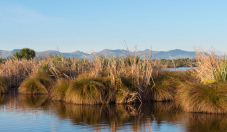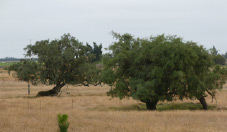Colin D Meurk (Honorary Botanist, CHS and Research Associate, Landcare Research)
It’s a cliché that the city lost so much and squandered opportunities; but the heart still beats and embers of city pride still glow. We seem to be waiting for winds of change to fan them into newly imagined life. I’ve previously alluded to a multi-layered response to the Christchurch predicament. Not an ‘either/or’ city, locked into one corseted dimension (to paraphrase Evan Smith). What kind of image do we want to project and, importantly, what will endure? What will speak of the present as well as the past? This is a crucial question and time for Christchurch. And CHS should be a voice in that conversation. The danger we (the country, the region and the city) are facing, is acquiescing to a homogenised world where every place is the same. Our identity and sovereignty depends on having a point of difference; being bold, continually innovative yet holding onto core values while adopting the good from global culture; preserving all our layers of history, that anchor us, while synthesising and presenting a fresh face, calmly, richly, without appearing to be obsessive.
The essence of place is reinforced through visual cues to history, uniqueness, identity, negotiated co-existence between nature and culture, an inclusive, social contract, being a crucible and catalyst for creativity. These attributes are all threatened by globalisation of economics, architecture, and landscape, and extinction of experience. The special and unique cues, to a sadly under-sold Christchurch, lie with its landscape – the intricate or sweeping shoreline of rock and sand, the plains spilled over by river braids, the rolling hills and cloud piercing mountains; the skyscape – the breath-taking nor’ west sky song; the Gondwanic heritage – lofty kahikatea, squiggly inanga, ancient wrens and kiwi; and then the people, the millennial, embracing cloak of mana whenua; the colonial tapestry, the garden city and maybe now the modern eco-city, expressed in music, street arts, physicality of built structures, and scholarship – the synthesis of all that has gone before, celebrating each layer discretely and distinctly – but joined up in a way that preserves all the stories, inter-woven like strands of a harakeke rope tenaciously connecting our birth and struggles through space and time.

 Our anchor projects need to not only be masonry, steel, timber and glass, old and new, but cathedrals of matai, totara and kowhai, feeding kereru and korimako, and drifts of snowy kanuka … all sanctuaries for wildlife, for ideas, curiosity, learning and solutions for the ‘wicked problems’ of the future rushing towards us. We need to bring together good old-fashioned gardening, imagination and clever design, leavened and joined up by history, diversity and ecology – in other words sensitivity to our own environment and a place where lessons can be learnt and maybe shared with visitors, tourists, the country (caught up in its own struggles of flags and nationhood), and beyond to the troubled world. We do have a part to play in the relentless march of time; we should grab the opportunity, and not just sit on our hands, wallowing. We don’t need to be puffed up about it, but we can make sure we are a place to be – for people, plants and poetry.
Our anchor projects need to not only be masonry, steel, timber and glass, old and new, but cathedrals of matai, totara and kowhai, feeding kereru and korimako, and drifts of snowy kanuka … all sanctuaries for wildlife, for ideas, curiosity, learning and solutions for the ‘wicked problems’ of the future rushing towards us. We need to bring together good old-fashioned gardening, imagination and clever design, leavened and joined up by history, diversity and ecology – in other words sensitivity to our own environment and a place where lessons can be learnt and maybe shared with visitors, tourists, the country (caught up in its own struggles of flags and nationhood), and beyond to the troubled world. We do have a part to play in the relentless march of time; we should grab the opportunity, and not just sit on our hands, wallowing. We don’t need to be puffed up about it, but we can make sure we are a place to be – for people, plants and poetry.
What’s in it for CHS – in this re-imagining? We can speak up, provide inspirational imagery that helps people imagine, that presents and interprets a collage of genres, that has meaning to the city’s history; the thought-provoking lecture series and the tried and true technical programmes; youth-relevance through social media messaging, practical work that not only show-cases conventional gardening and the garden city but delves into its meaning and expands the relevance; and through contemporary habitat enhancement and restoration that captures our endangered savannah, featuring the tiny plants and textured shrubs, uniquely adapted to Canterbury’s aridity – through publicly visible roadside examples, such as along the Christchurch 360 Trail, and through propagating material for Canterbury rock-gardens and related green roofs, walls and pavers; and promoting a balance of English and indigenous noble street trees – all to feed dependent native insects, lizards and birds. This would be a distinctive Christchurch and Canterbury that would add to the many faces of the city – once again a place to be, and to visit.

